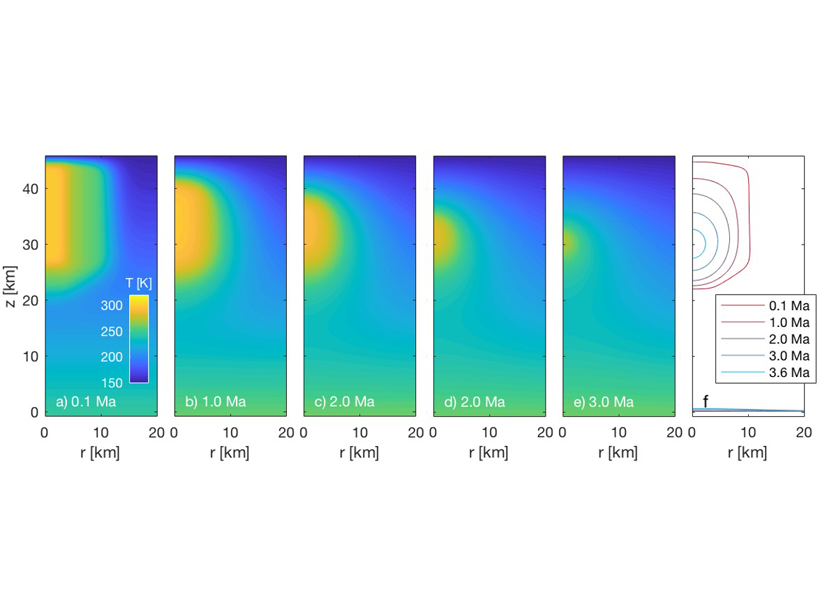The water-rich plumes erupting from Saturn’s moon Enceladus show the chemical signs of water-rock interactions deep within the moon, further implicating Enceladus as a potential habitat for life.
A. Dombard
Peeling Back the Layers of the Climate of Mars
A new study ties layers in the polar deposits of Mars to changes in climate driven by orbital variations, constraining accumulation rates and further deciphering the climate history of the Red Planet.
On the Prospect of Ancient Metallic Volcanism on Asteroids
There is a possibility of ancient volcanism on metallic asteroids, a new type of volcanism that is not yet observed, though the Psyche mission to the asteroid Psyche may change that soon.
Erupting Saltwater and the Bright Spots in Occator Crater, Ceres
Simulations show that pockets of brine that form from the addition of impact heat to the crust of Ceres could have erupted on the floor of Occator crater, explaining the presence of the bright spots.
Comparing Craters
An analysis suggests that craters degrade faster on Mercury than the Moon, raising questions about landscape evolution on different planetary bodies.
Close Encounter with Jupiter
First results from the Juno mission shed new light on Jupiter’s atmosphere, gravity, magnetic field, aurora, history, and more.
Imagining a Different Earth
Data will be critical to start to answer whether the newly found TRAPPIST-1 worlds are truly Earth-like.
New Geophysical Research Letters Editorial, Revisions Policies
Changes in submittal, editorial, and review policies support high standards and timely publication in the face of the increasing number of papers submitted.
First Results from the MAVEN Mission to Mars
Geophysical Research Letters publishes First Results from the MAVEN Mission to Mars, demonstrating a remarkable achievement of NASA's MAVEN team and the broader scientific community.









